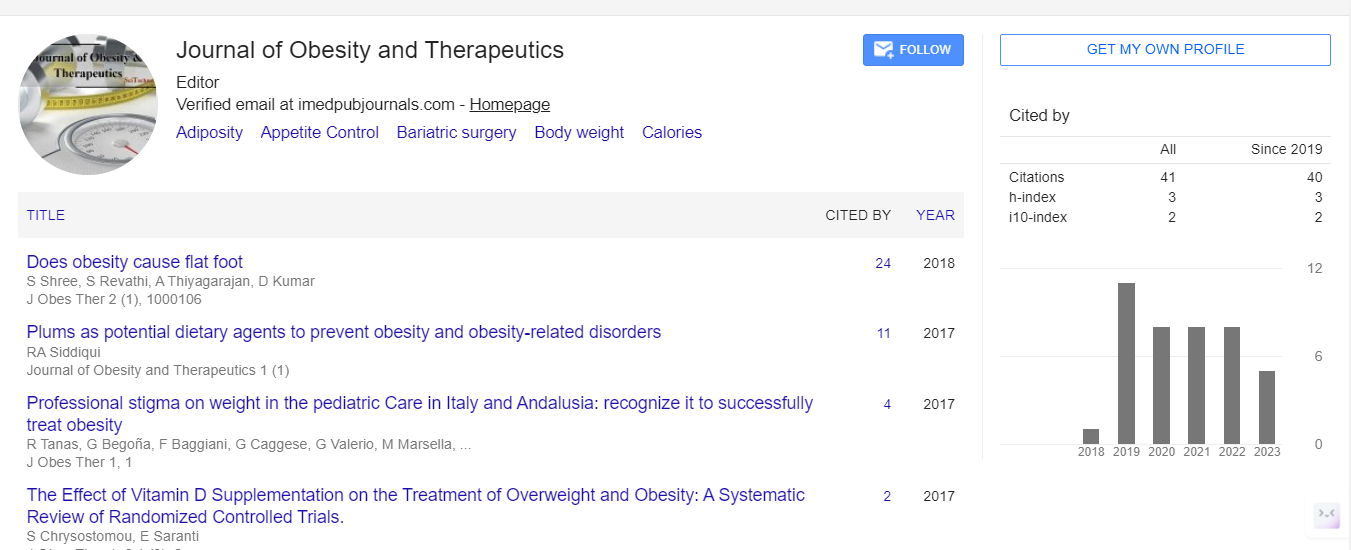Commentary, J Obes Ther Vol: 7 Issue: 2
Liposuction Techniques: Exploring Innovations for Enhanced Body Contouring
Daniel Richard*
1Department of Surgical Medical Nursing, University of São Paulo, São Paulo, Brazil
*Corresponding Author: Daniel Richard,
Department of Surgical Medical Nursing,
University of São Paulo, São Paulo, Brazil
E-mail: Richard.daniel96@uni.br
Received date: 22 May, 2023, Manuscript No. JOT-23-106785;
Editor assigned date: 24 May, 2023, PreQC No. JOT-23-106785 (PQ);
Reviewed date: 08 June, 2023, QC No. JOT-23-106785;
Revised date: 16 June, 2023, Manuscript No. JOT-23-106785 (R);
Published date: 26 June, 2023 DOI: 10.4172/jot.1000236.
Citation: Richard D (2023) Liposuction Techniques: Exploring Innovations for Enhanced Body Contouring. J Obes Ther 7:2.
Description
Liposuction, also known as lipoplasty or body contouring surgery, is a surgical procedure designed to remove stubborn fat deposits from specific areas of the body. It is one of the most commonly performed cosmetic procedures worldwide. In recent years, advancements in liposuction technology have led to the development of innovative techniques that offer enhanced precision, reduced invasiveness, and improved patient outcomes.
Historical background
The concept of liposuction dates back to the 1920s when French surgeon Charles Dujarier first attempted to remove fat from the legs of a ballet dancer using a uterine curette. However, it wasn't until the 1980s that significant advancements were made by Dr. Yves-Gerard Illouz and Dr. Pierre Fournier, who pioneered the modern tumescent liposuction technique.
Liposuction techniques
Tumescent Liposuction: This technique involves injecting a large volume of tumescent fluid into the targeted area, which contains a combination of saline solution, local anesthetics, and epinephrine. The fluid helps numb the area, reduce bleeding, and facilitate fat removal.
Ultrasound-Assisted Liposuction (UAL): UAL utilizes ultrasound energy to liquefy fat cells before suctioning them out. It is particularly effective for fibrous areas, such as the male breast or back.
Laser-Assisted Liposuction (LAL): LAL employs laser energy to heat and liquefy fat cells, making them easier to remove. This technique is commonly used for smaller treatment areas.
Power-Assisted Liposuction (PAL): PAL employs a vibrating cannula that facilitates the removal of fat cells with less manual effort, resulting in reduced surgeon fatigue.
Patient selection
Ideal candidates for liposuction are individuals who are close to their ideal body weight but struggle with localized fat deposits that are resistant to diet and exercise. Patients should have realistic expectations and be in good overall health.
Benefits of liposuction
Liposuction offers several benefits, including improved body contouring, enhanced self-confidence, and the ability to fit into clothing more comfortably. It can target areas such as the abdomen, thighs, hips, arms, and neck, helping patients achieve a more proportionate figure.
Potential risks and complications
While liposuction is generally considered safe, like any surgical procedure, it carries potential risks and complications. These may include infection, bleeding, skin irregularities, fluid accumulation, and anesthesia-related issues. However, with a qualified surgeon and proper post-operative care, the risks can be minimized.
Advancements in liposuction technology
Over the years, advancements in liposuction technology have led to improved patient outcomes and reduced downtime. Techniques like laser-assisted liposuction, radiofrequency-assisted liposuction, and ultrasound-assisted liposuction have gained popularity due to their ability to provide effective fat removal with minimal invasiveness.
Post-operative care
Following liposuction, patients are advised to wear compression garments to reduce swelling and aid in the healing process. It is crucial to follow the surgeon's instructions regarding activity restrictions, pain management, and proper wound care to achieve optimal results.
Conclusion
Advancements in liposuction techniques have revolutionized the field, providing patients with safer procedures, reduced downtime, and improved outcomes. Laser-assisted liposuction, radiofrequencyassisted liposuction, and ultrasound-assisted liposuction are among the cutting-edge approaches that have gained popularity due to their efficacy and benefits. As the field progresses, further research and innovation will continue to refine liposuction techniques, enhancing patient satisfaction and expanding the range of treatment options available.
 Spanish
Spanish  Chinese
Chinese  Russian
Russian  German
German  French
French  Japanese
Japanese  Portuguese
Portuguese  Hindi
Hindi 